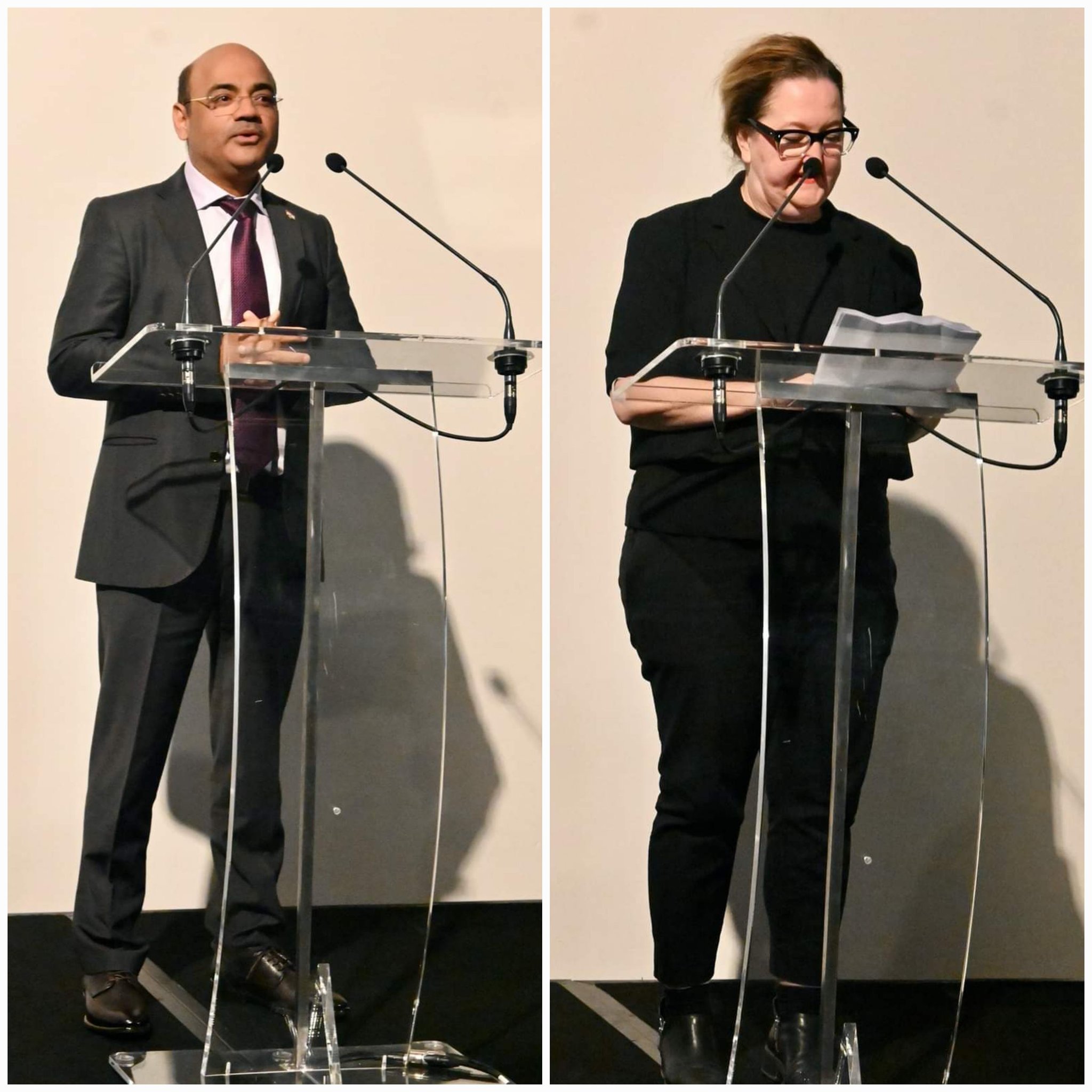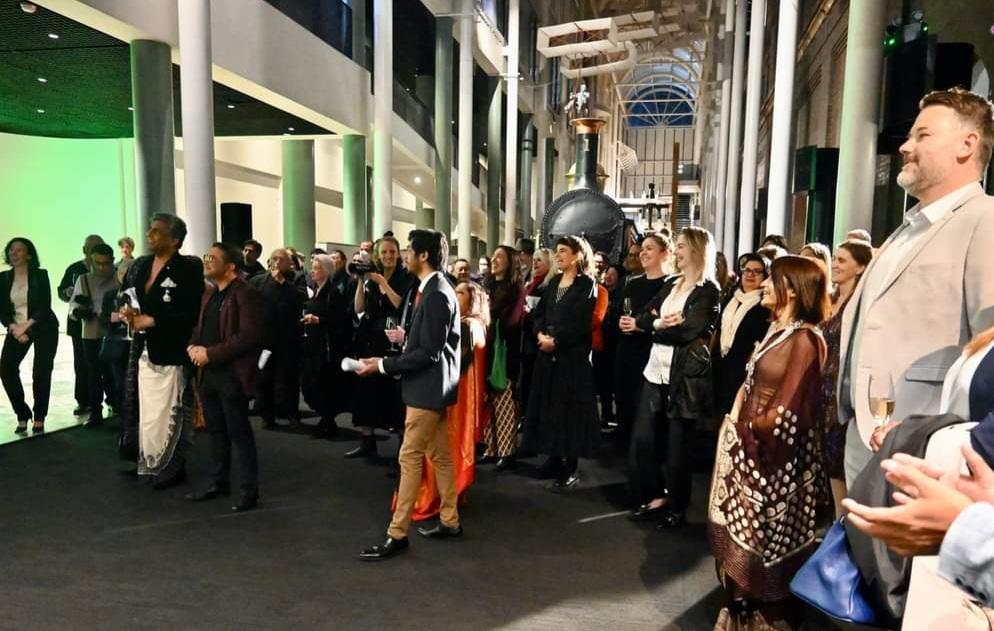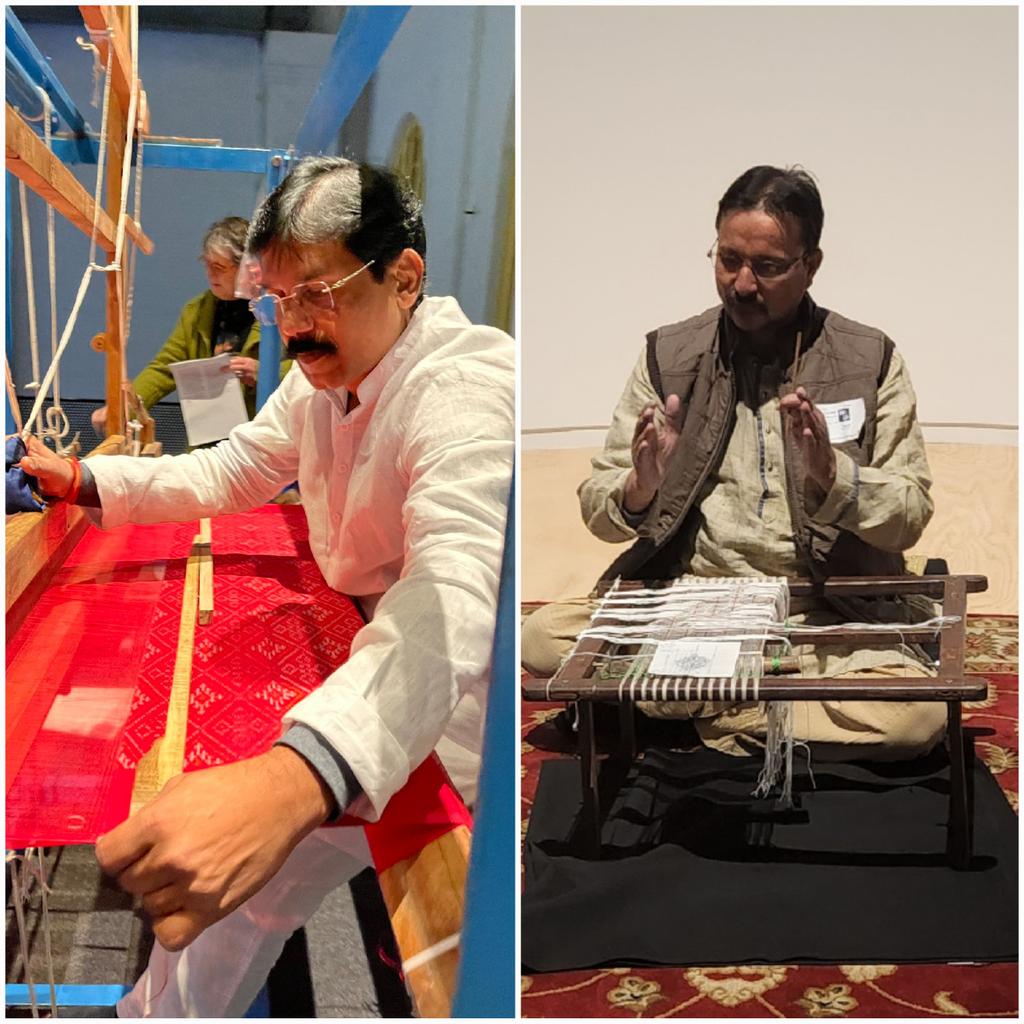The Powerhouse Museum in Sydney has a new exhibition, Charkha and Kargha, presenting highlights from the museum’s expansive collection of Indian textiles to celebrate 75 years of Indian Independence. The exhibition opened on 13 August 2022 and will run for six months.
This exhibition is being presented with the support of the Consulate General of India, Sydney.

Taking its title from Charkha (spinning wheel) and Kargha (loom), the exhibition features over 100 rare items that date back to the foundational collections of the Powerhouse acquired in the 1870s.

In addition to their beauty, many of the textiles featured in the exhibition incorporate spinning, weaving, dyeing and embroidery techniques. Highlights include block-printed textiles, known as Fustat fragments, believed to be made in Gujarat in the 1400s.
A fine pashmina shawl woven in Kashmir between 1840–60 exemplifies the double-interlock twill tapestry weave Kani, which has proven impossible for Europeans to replicate, nor match the extreme softness of pashmina shawls. The design reflects the reciprocal influence of French jacquard-woven shawls of the early to mid-1800s.

Another highlight is a textile embellished with iridescent jewel-like beetle wings, likely made in Chennai or Hyderabad in the 1800s. It is indicative of India’s successful export trade in dress panels, muslin stoles, flounces and table linen.

Traditional men’s clothing on display includes a hand-sewn silk coat with brocaded floral designs, made between 1900–25, and a silk and velvet vest featuring Zardozi (gold work embroidery), including Salma (densely set small coils) and sequins made in the Punjab region during the 1800s.

The exhibition also features a recently acquired work by artist Sangeeta Sandrasegar, What falls from view, 2019. The work features Khadi and silk pieces, hand-dyed in Indian indigo and Australian native cherry.

Anu Kumar’s medium format photographs that document the Australian-Indian diaspora are another highlight of the exhibition. The opening of the Charkha and Kargha exhibition coincided with the 75th anniversary of India’s independence celebrated every year on 15 August.

The exhibition demonstrates the role that textiles played in India’s movement towards independence from colonial rule. Charkha and Kargha feature live demonstrations of spinning and weaving in the Textile Centre, talks on Indian textiles, masterclasses on textile weaving, dyeing and spinning by Master Vankar Vishram Valji, daily storytelling of Indian folktales and documentary film screenings in the Kings Cinema.

The donation from the Indian Government’s Ministry of Textiles includes 60 exemplary examples of handwoven sarees, turban cloths and other textiles from across India, two handlooms from Hyderabad and Varanasi and two charkha models. 62 documentary films about textile production were also donated by the Indian Government’s Ministry of Information and Broadcasting.
For the opening week of the exhibition, Powerhouse is hosting India Master Weaver Shri Naseem Ahmed, accompanied by assistant weaver Shri Tauseef Ahmad Ansari, providing weaving demonstrations on the traditional wooden Banarasi (Varanasi) loom.

Master Weaver Shri Ramesh Tadaka, accompanied by assistant weaver Shri Yadagiri Paladi, is also providing demonstrations on the Hyderabad loom.
Consul General of India in Sydney, Manish Gupta, said that he commended the curatorial team at the Powerhouse for their nuanced and exemplary work.
“We are honoured by the opportunity to support the Charkha and Kargha exhibition in this landmark year. The Indian Ministry of Textiles has generously provided exquisite handwoven fabrics from different parts of India depicting its rich heritage, including silk and cotton sarees, textile accessories, and handlooms, and by sending highly accomplished master weavers from India for live demonstrations to complement the exhibition. Each item on display in the exhibition has its unique aesthetic signature and glorious history behind it”, said Consul General of India, Sydney, Manish Gupta
“Charkha and Kargha pays homage to the skill and creativity of generations of textile artisans and embroiderers from across India. Powerhouse is excited to be sharing this extraordinary collection with many of these objects being on display for the first time,” said Powerhouse Chief Executive Lisa Havilah.

“Textile production has always occupied an important place in India and among its craftspeople and weavers. Charkha and Kargha highlights a selection of unique Indian textiles collected by Powerhouse, shedding light on the diverse techniques of textile craft, design and production. These include botanical specimens used for dying, spinning wheels and loom; woodblock prints; and diverse Indian textiles and garments,” said Powerhouse Curator Pedram Khosronejad.
The Powerhouse Museum worked in collaboration with IABCA (India Australia Business & Community Alliance) to generate community engagement.






